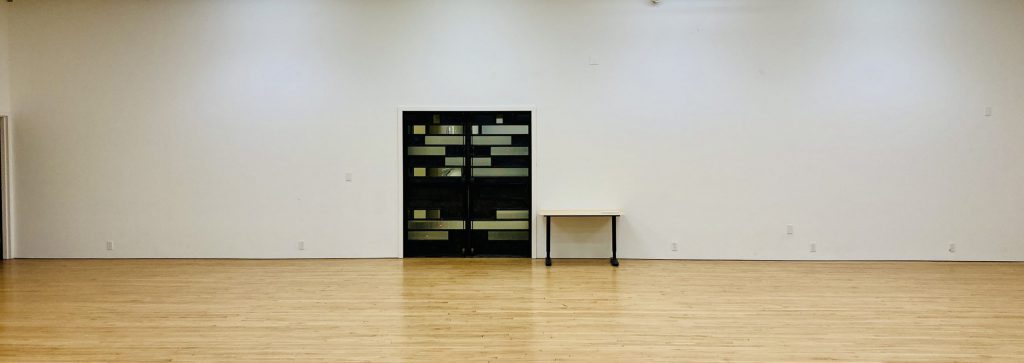Exhibition
Deaccession is a notional collection of images, artifacts, and other provocations on the theme of uncatalogued books, broadly construed. It was planned for installation at the Hagan Gallery of the Lewis Center for the Arts. The pandemic has cast the exhibition’s installations into the ether, but they orbit that physical space, where some of them had a brief and private life. Here they are all made public as a meditation on ways that the university’s dispersed holdings reflect the shifting structures of its disciplines.

How to Make Something Useful with Books
Notes on the Dewey Decimal System
The Deaccession of Woodrow Wilson
This project was conceived collaboratively in Fall 2021 by the cohort of HUM 593, Interdisciplinarity and Antidisciplinarity. This collection, ranging from a conceptual site-installation that involves New York toxic water to a film that documents the journey of a book in RECAP, meditates on the concept of deaccession.
The book-related projects invite us to rethink the functionality and life of a book. In “How to Make Something Useful with Books,” Utku and Nick offer useful guides for utilizing books as physical objects, instead of source of knowledge. This project, in Utku and Nick’s words, raises the “questions of ‘utility’ and ‘relevance’ which define contemporary debates within and outside the humanistic disciplines.” From an online spectator’s perspective, this installation fittingly serves as an analogy of our own research career: choosing books (scholarships) that can fit together (producing publications) in order to form a seat (a tenure position?). In this sense, the security of seating (tenur-ability) has nothing to do with the knowledge documented/possessed in the books. Looking at the materiality of books from a different angle, the “Help an Orphan Book Today” explores the meaning of books without an owner. Why do people have a hard time throwing away books? My observation is that books are often annotated with notes, gifted for the beloved, or preserved as memory item. As an object, books can be quite personal—whether for leisure reading, test preparation, or for ‘being looked at’ on a huge shelf as decoration. There are several apps and online platforms, such as eBay, Facebook marketplace, Poshmark, OfferUp, that deal with second-hand items, but why can’t books find its new home this way? I am curious to see the outcome of the project. Lastly, Paul and Jeff’s project anthropomorphize a book, with a short film documenting the journey of ‘Recap’ in RECAP (Research Collection and Preservation Consortium), a 16-millions item storage area near Princeton. The high-tech nature of the recap process (film footage) is captivating and here’s the striking moment: [about how the facility is maintained] “…temperature and humidity are controlled—not for reading, but for finding.” At RECAP, Books, as inanimate objects, are receiving better treatment than (some) humans. I am appalled… because one of the original ideas for this exhibition includes a musical instrument (a non-playable harpsichord) that was deaccessed from the music building due to neglect and lack of climate control. This difference in object treatment might signal to us the hierarchy in academic disciplines and knowledge production. On a final (and musical) note, there was a musical recap at the end of the film, resonating the circularity of the book.
The other projects of deaccession channel us to confront violence, dissonance, and pollution within our contemporary socio-political contexts. In “an annotated cockfight”, Ayluonne and Nick both provide their critical readings and embodied experiences of watching the film; their accounts demonstrate “the points of interpretive overlap, friction, and incommensurability between our disciplinary perspectives, while also meditating on how certain forms of knowledge production become accessed, deaccessed, or reaccessed….” This virtual format also challenges us to think about how our impressions might vary with different experiential settings (watching the film via our electronic devices vs. at the installation site). How will the ‘performance’ setting of the film influence our knowledge production? Similarly, the Gowanus Oyster, an experimental set up that focuses on the toxic water in New York City’s Gowanus Canal, relies on the physical site. Yet, this virtual format forces us to use our imagination to consider the impact and meaning of environmental violence. Finally, Monica and Angelika’s project on the deaccession of Woodrow Wilson shows a chronological reflection of the process: from Black Justice League’s protest in 2015 to the final verdict in 2020 (with interludes such as Trump’s Twitter posts). While it is a first step in the right direction, the deaccession of the name does not remove the pain and harm it has already caused. As emphasized by a statement from Policy School Graduate students, “changing the name, though long overdue, cannot and will not be enough to address the significant issues we raise here.” How does the deaccession help decentering the white-supremacy narrative (or not)? How will this do for reaching a more EDI ideals and help us move away from the past?
Joyce Chen